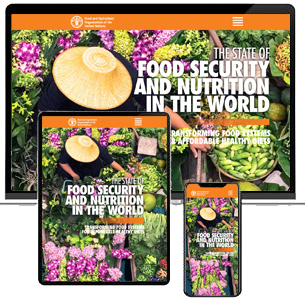A combination of worsening global poverty and the particular challenges arising out of the advent of the COVID-19 pandemic could push more than over 130 million more people into chronic hunger by the end of 2020, the latest edition of the State of Food Security and Nutrition in the World, published in July warns. In effect, the grim prognosis casts serious doubts on one of the UN’s more important Sustainable Development Goals (SDG’s) – the global eradication of all forms of hunger and malnutrition by 2030.
The UN says that the low affordability of “healthy diets,” particularly in parts of Asia and Africa, has meant that further tens of millions, particularly in Asia and Africa, have joined the ranks of the chronically undernourished over the past five years, while various countries around the world continue to struggle with multiple forms of malnutrition.
The most recent edition of the State of Food Security and Nutrition in the World, provides an estimate of almost 690 million people going hungry in 2019, up by 10 million from the previous year and by nearly 60 million in five years. People, it adds, cannot afford to eat healthily and nutritiously on account of high food costs and low affordability.
What is doing the situation no favours, the UN report says, is appearance of the COVID-19 pandemic which could precipitate flare-ups of acute hunger, pushing the numbers up much quicker than otherwise would have been the case.
The State of Food Security and Nutrition is regarded as the world’s most authoritative global study tracking progress towards ending hunger and malnutrition. It is produced jointly by the Food and Agriculture Organization of the United Nations (FAO), the International Fund for Agriculture (IFAD), the United Nations Children’s Fund (UNICEF), the UN World Food Programme (WFP) and the World Health Organization (WHO).
The findings of the Report leave the UN agencies responsible for its compilation acknowledging that “five years after the world committed to end hunger, food insecurity and all forms of malnutrition, we are still off-track to achieve this objective by 2030.” While some countries, including Guyana, produce sufficient food to feed their respective populations, many of them continue to face logistical challenges in developing food distribution systems that ensure that their entire populations benefit from adequate supplies of healthy, nutritious foods.
The unfolding trend suggests that after steadily diminishing for decades, chronic hunger slowly began to rise in 2014 and continues to do so. Latin America and the Caribbean ranks third behind Asia and Africa in terms of the greatest number of undernourished – 48 million. 0ver the last five years, hunger has grown in step with the global population.
What is not helping, the report says, is the fact that the toll being taken by the pandemic is intensifying the vulnerabilities and inadequacies of global food systems, those being all the activities and processes affecting the production, distribution and consumption of food.
While it is too soon to assess the full impact of the lockdowns and other COVID-19 containment measures, the report estimates that at a minimum, another 83 million people, and possibly as many as 132 million, may go hungry in 2020 as a result of the economic recession triggered by COVID-19.





